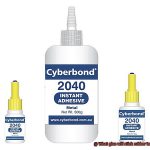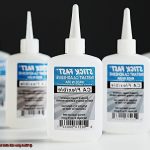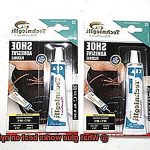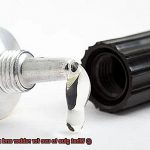Ever found yourself staring at a pile of rocks, wondering how on earth you can stick them together? Trust me, I’ve been there too. But fear not, my fellow rock enthusiasts, because today we’re diving headfirst into the captivating world of rock adhesives.
Whether you’re a DIY daredevil or a seasoned stonemason, knowing which glue to use is the key to turning your rock-related dreams into reality. We’ll be exploring an array of glues that possess the strength and resilience needed to withstand the test of time.
Picture this: crafting stunning stone mosaics that leave your guests in awe or constructing majestic rock walls that make you feel like you own your very own castle. With the right adhesive in hand, these dreams can become tangible masterpieces.
But hold on tight. Our adhesive adventure doesn’t end there. We’ll be delving into different glue formulations, considering factors like porosity, weather resistance, and good old versatility. Because let’s face it – no two rocks are alike, and neither should our glues be.
So get ready to embark on this journey with me as we uncover the adhesive wonders capable of transforming your rock-related projects from ordinary to extraordinary. It’s time to unlock the secrets and find out what glue will truly hold rocks together in all their rugged glory.
Let’s dive in and make those bonds rock solid.
Types of Glue for Bonding Rocks Together
Contents
- 1 Types of Glue for Bonding Rocks Together
- 2 Preparing the Rocks for Glue Application
- 3 Epoxy-Based Glues
- 4 Super Glue/Cyanoacrylate Adhesives
- 5 Masonry Adhesives for Porous Rocks
- 6 Cleaning and Prepping the Surfaces of the Rocks
- 7 Applying the Glue to the Rocks
- 8 Other Factors that Affect Bond Strength
- 9 Conclusion
If you’re looking to create stunning rock crafts or build a sturdy stone structure, selecting the right glue is crucial. With a wide array of options available, it can be overwhelming to find the perfect adhesive for your project. In this article, we’ll explore the different types of glue used for bonding rocks together, their advantages and disadvantages, and how to select the right one for your needs.
Epoxy Glue: The Rock Solid Solution
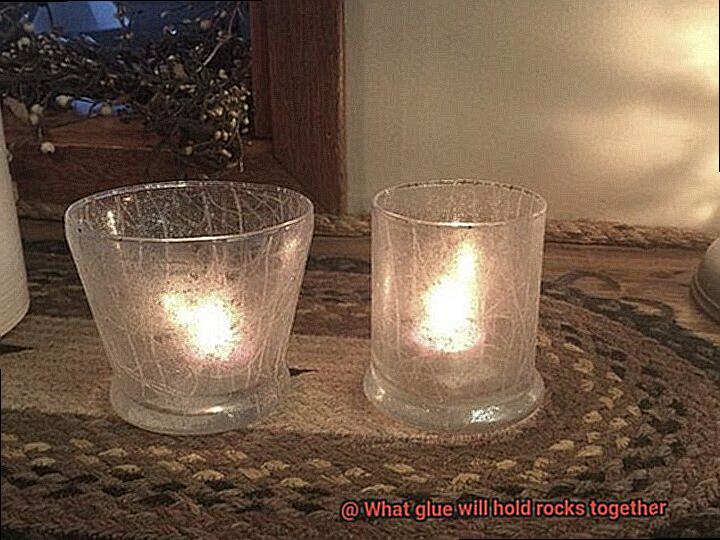
When it comes to bonding rocks, epoxy glue is a popular choice. It’s known for its high strength and resistance to water, heat, and chemicals. This two-part adhesive consists of a resin and a hardener that, when mixed together, create a strong and durable bond. Epoxy glue is suitable for both indoor and outdoor applications. However, it requires careful mixing and application to achieve optimal results.
Construction Adhesive: Versatility with Reliability
For a versatile option that’s commonly used in construction and home improvement projects, look no further than construction adhesive. It provides a strong bond on various surfaces, including rocks. Easy to use and reliable, construction adhesive may not be as strong as epoxy glue but is a cost-effective solution that gets the job done.
Silicone Adhesive: Flexibility and Waterproofing
If you’re bonding rocks in wet environments or need flexibility in extreme temperatures, silicone adhesive is your go-to option. It can withstand high and low temperatures without losing its adhesive properties. Silicone adhesive is also waterproof, making it perfect for outdoor applications. However, keep in mind that it may not provide as strong of a bond as epoxy or construction adhesive.
Polyurethane Adhesive: Strength with Expansion
When you need a versatile adhesive that bonds various materials, including rocks, polyurethane adhesive is an excellent choice. It creates a strong bond that is resistant to water, heat, and chemicals. Moreover, polyurethane adhesive expands as it cures, filling gaps between rocks for added strength. However, be prepared for potential messiness during application and consider using clamps to ensure proper curing.
Specialized Rock Adhesives: Professional-Grade Bonding
For professional stone masonry and construction projects, specialized rock adhesives are the way to go. These adhesives are formulated specifically for bonding rocks, providing a strong and durable bond that resists weathering and aging. However, they may be more expensive and harder to find compared to other types of glue. If you’re looking for the highest level of bonding performance, specialized rock adhesives are worth the investment.
Conclusion:
Selecting the right glue is essential for successful rock bonding projects. Consider factors such as intended use, environmental conditions, and personal preferences when choosing your adhesive.
Preparing the Rocks for Glue Application
Before diving into the exciting world of glue application, it’s crucial to prepare your rocks properly. This step is essential to ensure a strong and durable bond that will stand the test of time. In this comprehensive guide, we will take you through the process of preparing rocks for glue application in a fun and engaging manner.
Step 1: Cleaning the Rocks:
Begin by giving your rocks a thorough scrub with water and a mild detergent. This simple yet vital step removes any dirt or loose particles that may hinder the bonding process. Gently wield a soft brush or cloth to cleanse every nook and cranny of the rocks’ surfaces. Once sparkling clean, rinse them thoroughly with pristine water and allow them to dry completely.
Step 2: Removing Loose Parts:
With a discerning eye, inspect your rocks and eliminate any loose parts or fragments that may not hold well with glue. Utilize a chisel or a small hammer to delicately tap and detach these precarious pieces. Remember, stability is key—ensure that the surfaces to be glued are solid and unyielding.
Step 3: Sanding the Surfaces:
To create an optimal bonding surface, bestow a light sanding upon the areas where you intend to apply the glue. This meticulous act roughens up the surface, providing enhanced grip for the adhesive. Armed with fine-grit sandpaper, execute circular motions until achieving a subtly rough texture on the rocks.

Step 4: Cleaning Again:
After completing the sanding process, it is imperative to cleanse the rocks once more to eliminate any dust or debris generated along the way. Employ a soft brush or cloth to delicately whisk away any lingering particles, then rinse the rocks with pristine water. Patience is key—allow them to bask in the warm embrace of time, ensuring they dry completely before moving forward.
Step 5: Choosing the Right Glue:
With your rocks now pristine and primed, it’s time to select the perfect glue for your project. Different glues possess varying properties and strengths, so it is vital to choose one that is suitable for bonding rocks together. Consider options such as epoxy glue, construction adhesive, or cyanoacrylate (super glue). Delve into research, understand the unique properties of each type, and select the one that best aligns with your needs.
Epoxy-Based Glues
When it comes to bonding rocks together, epoxy-based glues reign supreme. These powerful adhesives offer a winning combination of strength and durability, making them the go-to choice for professionals and DIY enthusiasts alike. But what exactly are epoxy-based glues, and why are they so highly regarded?
At their core, epoxy glues consist of two components: a resin and a hardener. When these components are mixed together, a chemical reaction occurs, resulting in a bond that is nothing short of extraordinary. It’s like witnessing the birth of a superhero duo, ready to tackle any bonding challenge that comes their way.
One of the standout features of epoxy-based glues is their sheer strength. These glues can handle heavy loads and resist impacts with ease, making them ideal for creating stunning rock sculptures or building sturdy pathways that will stand the test of time.
But strength is just the tip of the iceberg. Epoxy glues also boast excellent resistance to water and chemicals. Once cured, they create a waterproof barrier that shields your bond from moisture and other environmental factors. So even if your rocks are exposed to rain or harsh chemicals, your bond will remain rock-solid.
And let’s not forget about temperature resistance. Epoxy-based glues can handle scorching heat or freezing cold without breaking a sweat. So go ahead and unleash your creativity outdoors, knowing that the elements won’t stand in the way of your beautiful bond.
Now that you’re familiar with the benefits, let’s delve into some application techniques and safety precautions. Before bonding rocks together, it’s crucial to clean the surfaces thoroughly, removing any dirt or debris to ensure maximum bonding strength. Don’t forget to sand the surfaces as well for optimal adherence. Remember, preparation is key to creating a masterpiece.
When it comes to mixing and curing, follow the manufacturer’s instructions religiously. Different epoxy glues may have different ratios and curing times, so be patient and let the magic happen. And always choose an epoxy glue specifically designed for bonding rocks together to ensure the best results.
Super Glue/Cyanoacrylate Adhesives
When it comes to creating durable rock sculptures or sturdy pathways, super glue, also known as cyanoacrylate adhesive, is the ultimate superhero in the world of adhesives. This article will delve into the remarkable properties and versatile usage of this powerful adhesive, explaining how it can help you join rocks together with strength and precision.
Properties and Usage:
- Lightning-Fast Bonding Power: Cyanoacrylate adhesives are renowned for their instant bonding capabilities. Upon contact with moisture, such as the humidity in the air, these adhesives swiftly polymerize, forming a robust bond that withstands the test of time.
- Viscosity Options for Every Need: Super glue is available in a range of viscosities, from thin to gel-like consistency. This wide selection allows you to choose the viscosity that best suits your bonding requirements. Thin viscosities are ideal for narrow gaps, while thicker ones are perfect for bonding uneven surfaces.
- Prep for Success: Before applying super glue to bond rocks together, it is crucial to ensure that the surfaces are clean and free from dust or debris. Wipe the surfaces with a clean cloth or use a brush to remove any loose particles, ensuring an optimal bond.
- The Application Art: Apply a small amount of super glue to one of the surfaces and press the rocks together firmly. The adhesive will create an immediate bond. To allow the glue to fully set, hold the rocks in place for a few minutes.
Advantages:
- Herculean Tensile Strength: Super glue boasts high tensile strength, making it suitable for bonding rocks that may experience stress or movement over time. Rest assured that your rock sculptures or pathways will remain intact and solid.
- Rapid Results: With its lightning-fast bonding power, super glue allows you to complete your projects efficiently, saving you valuable time and effort. No longer will you have to wait hours or days for your adhesive to dry and set.
- Versatility Unleashed: Super glue can bond various types of rocks, adding to its versatility. Whether you’re working with granite, limestone, or sandstone, super glue provides a reliable bond. However, it is essential to test the adhesive on a small inconspicuous area before proceeding with the bonding process.
Limitations:
- The Porous and Oily Challenge: Super glue may not provide a strong bond with porous or oily surfaces. When dealing with such materials, alternative adhesives may be more suitable for achieving a secure and long-lasting bond.
- Weathering the Elements: While super glue can securely hold rocks together, it is not recommended for load-bearing structures or outdoor environments exposed to moisture and temperature fluctuations. These factors may weaken the bond over time, compromising its longevity.
Masonry Adhesives for Porous Rocks
When it comes to bonding porous rocks together, ordinary glue won’t make the cut. That’s where masonry adhesives come to the rescue. These specialized adhesives are designed to penetrate the pores of rocks, creating a bond that can withstand the test of time. In this article, we’ll explore the best practices for using masonry adhesives on porous rocks, including the types of adhesives suited for the job, their advantages and disadvantages, and step-by-step instructions on how to apply them effectively.
Types of Masonry Adhesives:
Epoxy and polyurethane adhesives are two popular options for bonding porous rocks. Epoxy adhesives consist of two components – a resin and a hardener – that are mixed together before application. This adhesive cures into a strong and durable bond. On the other hand, polyurethane adhesives offer flexibility and can withstand movement and vibrations, making them ideal for outdoor applications.
Advantages and Disadvantages:
Epoxy adhesives boast excellent adhesion properties and can bond a wide range of materials, including porous rocks. They provide exceptional strength and durability. However, they can be a bit tricky to work with due to the need for precise mixing ratios and relatively longer curing times. Polyurethane adhesives, on the other hand, offer flexibility and resistance to environmental factors like water and temperature changes. They are easy to use and provide good bond strength, but may not offer the same level of strength as epoxy adhesives.
Step-by-Step Application:
- Prepare the surfaces: Thoroughly clean the rocks, removing any dust or dirt that could hinder bonding. Some adhesives may require roughening the surface for better adhesion.
- Mix the adhesive: For epoxy adhesive, follow the manufacturer’s instructions to mix the resin and hardener in the correct ratios. For polyurethane adhesive, select the appropriate form (liquid, gel, or foam) and prepare it according to the instructions.
- Apply the adhesive: Use a trowel or a suitable applicator to apply a thin layer of adhesive to one of the rocks’ surfaces.
- Join the rocks: Press the rocks together firmly, ensuring even contact between the surfaces.
- Cure time: Follow the manufacturer’s instructions on curing time, temperature, and humidity conditions.
- Finishing touches: Once the adhesive has cured, remove any excess adhesive using a chisel or sandpaper for a smooth finish.
Cleaning and Prepping the Surfaces of the Rocks
Just like superheroes, masonry adhesives possess the power to create a lasting bond between porous surfaces. In this article, we will explore the importance of preparing rock surfaces, step-by-step instructions on how to effectively clean them, and touch upon sanding if needed. So, let’s embark on this rock-solid adventure.
Step 1: Brush away loose dirt and particles
Using a stiff brush or toothbrush, vigorously scrub away any loose dirt or debris from every nook and cranny on the rock surfaces. Pay extra attention to cracks and crevices that might trap dirt.
Step 2: Rinse with water (if necessary)
If brushing alone isn’t sufficient, rinse the rocks under running water or soak them in a bucket of water. However, remember that too much moisture can affect adhesive effectiveness, so ensure the rocks are completely dry before gluing.
Step 3: Deal with stubborn stains or residues
For stubborn stains or residues, use a mild detergent or soap that is safe for both the rocks and the environment. Gently apply it with a soft cloth or sponge, avoiding vigorous scrubbing that could damage the rock’s surface.
Step 4: Thoroughly dry the rocks
After cleaning, take special care to thoroughly dry the rocks before proceeding with gluing. Excess moisture can interfere with adhesive bonding. Place the cleaned rocks in a well-ventilated area and allow them to air dry for at least 24 hours. Avoid using heat sources like hairdryers or direct sunlight, as they can cause uneven drying or damage.
Step 5: Consider sanding (if necessary)
If working with rough or uneven surfaces, sanding may be necessary to create a smoother surface for effective bonding. Use sandpaper with varying grits, starting with a coarser grit to remove rough spots and imperfections, and gradually move to finer grits for a smoother finish. Sand all surfaces that will come into contact with the adhesive.
Applying the Glue to the Rocks
Now that we’ve prepared our rocks for the ultimate bonding adventure, it’s time to apply the glue and create a connection that will withstand the test of time. But before we dive in, let’s review some key points to ensure success.
- Cleanliness is Key: Just like a superhero needs a clean slate to conquer evil, our rocks need to be free from dirt and debris. Use a brush or cloth to remove any unwanted particles and make sure both surfaces are pristine.
- Choosing the Right Glue: Every hero needs the right tools for the job, and the same goes for bonding rocks. Epoxy, construction adhesive, and polyurethane glue are all popular options. Consider your specific needs and choose accordingly.
- Epoxy – The Super Strength Hero: Epoxy is known for its incredible strength and durability. It can handle water, temperature changes, and even outdoor applications. Remember to mix the two parts together before applying.
- Construction Adhesive – The Heavy-Duty Warrior: If you need a glue that can handle heavy-duty applications, construction adhesive is your go-to. Brands like Liquid Nails or Gorilla Construction Adhesive will provide a strong bond.
- Polyurethane Glue – The Versatile Champion: If versatility is what you seek, polyurethane glue is here to save the day. It expands as it cures, filling in gaps and providing excellent water resistance.
- Spreading the Glue: Like an artist creating a masterpiece, use a brush or spatula to spread the glue evenly over the surfaces that need to be bonded. Apply just enough glue to create a sufficient bond without excessive squeezing out.
- Hold it Together: Once the glue is applied, it’s time to bring our rocks together. Use clamps or apply pressure with your hands to hold them firmly until the glue sets. Refer to the manufacturer’s instructions for curing time.
- Special Considerations: Some rocks may require special care. Porous rocks like sandstone or limestone may benefit from a primer or sealant before applying the glue. Rough surfaces may need to be sanded for better bonding.
- Test, Test, Test: Before committing to the full bond, always test the glue on a small, inconspicuous area of the rocks. This will ensure compatibility and allow you to troubleshoot any potential issues.
- Safety First: Just like our favorite heroes protect themselves, make sure to follow safety precautions provided by the manufacturer. Work in a well-ventilated area if necessary and promptly clean up any excess glue.
Other Factors that Affect Bond Strength
Rock bonding is not just a simple task of slapping on some glue and hoping for the best. To achieve a strong and durable bond, several other factors come into play. Let’s dive into the world of rock bonding and explore the other factors that affect bond strength.
First and foremost, surface preparation is key. Just like any good DIY project, proper preparation is crucial for success. Before applying any adhesive, it is essential to ensure that the surfaces of the rocks are clean, dry, and free from any pesky dust or dirt. A quick brush or blast of compressed air should do the trick.
But if you really want to take it up a notch, roughening the surfaces by sanding or scoring can provide an even better grip for the glue.
Next, let’s consider the environmental conditions. Glue can be a bit finicky when it comes to temperature and humidity. Extreme temperatures, whether scorching hot or freezing cold, can compromise the effectiveness of the adhesive and weaken the bond strength. Similarly, high humidity levels can interfere with the curing process and leave you with a less-than-ideal bond.
So, it is crucial to follow the manufacturer’s guidelines regarding temperature and humidity requirements for optimal bond strength.
Now let’s talk application technique. It’s all about achieving that perfect spread. Applying too much or too little glue can result in an ineffective bond. So, take your time and follow the instructions provided by the glue manufacturer. They will give you all the details you need on bead size, spread rate, and curing time. Consistency and control are key here.
Last but not least, choosing the right adhesive is paramount. Not all glues are created equal, and when it comes to bonding rocks together, you want something with high bond strength that can handle porous materials. Epoxy adhesives are often recommended for rock bonding due to their excellent bonding capabilities and resistance to moisture.
However, always make sure to check the adhesive manufacturer’s instructions and recommendations to ensure compatibility with the specific type of rock you are working with.
AySbHYnUtqk” >
Also Read: How To Glue Rocks Together?
Conclusion
When it comes to the question of what glue will hold rocks together, there are a few options that can do the job effectively.
One popular choice is epoxy resin, which forms a strong bond that can withstand the test of time. Another option is construction adhesive, which is designed specifically for bonding heavy materials like rocks and concrete.
And let’s not forget about good old-fashioned super glue, which may not be as durable as epoxy or construction adhesive, but can still provide a temporary fix in a pinch.


